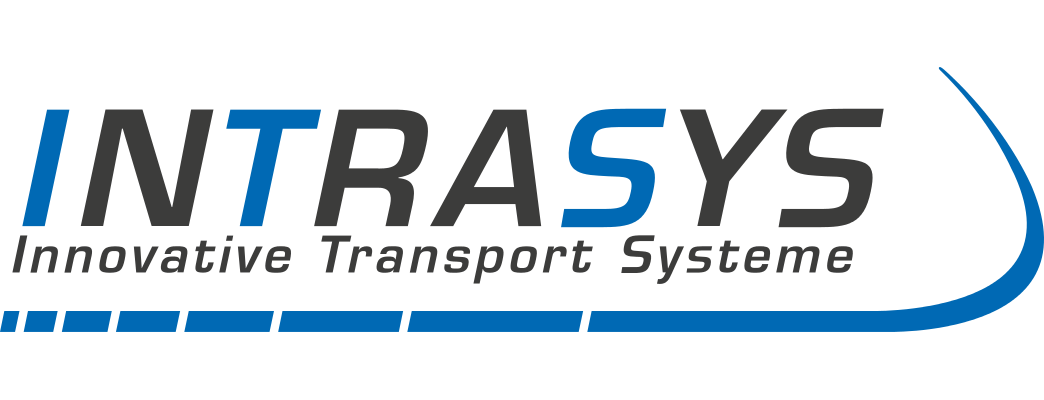InTraSys – a Success Story
1979
Dr. Peter Rosner starts working on linear magnetic drives and eddy-current brakes. A number of drives for transportation and for mine railways are built.
1989
Founding of InTraSys GmbH.
1989
1993
InTraSys build an automated pallet transportation system for the automotive industry.
1995
InTraSys plan, develop and supply both the drive system and the control electronics for an automated multi-storey car park in Würzburg, Germany. The systems installed start building a high reputation due to unheard reliability and availability from day one.1995
1996
In California „Superman – The Escape“ is built: World’s first big free-fall tower in an amusement park. The gondolas, weighing 7 metric tons (approx. 15.500 lb.), are accelerated with 2 g to a speed of 160 km/h (100 mph) before they shoot up a vertical track to an altitude of some 126 m (415 ft.) above ground. Then, the gondolas fall down freely in reverse direction. The passengers get weightless for about six seconds. InTraSys supply both the Linear Drive System and the Eddy-Current-Brakes, slowing down the gondola jerklessly after the journey with an absolute 100% reliability.1997
For the Transportation Museum in Luzern, Switzerland InTraSys develop and supply the Linear Drive System for a mine railway.
1997
1999
For the first time, gondolas of a big water coaster get decelerated after the journey by an Eddy-Current Brake, delivered by InTraSys. As magnetic brakes work without friction, the braking force is identical at any time. The coaster’s water level as well as splash water have no effect on the braking.2000
The experimental railroad track of „Neuen Bahntechnik Paderborn“ goes into operation. It uses a Linear Induction Motor designed and manufactured by InTraSys.
2000
2002
InTraSys supply the Drive System for a multi-storey car park test installation in Düren, Germany.
2002
For the first time ever, the travelling speed of gondolas in a roller coaster reaches 200 km/h (125 mph). InTraSys manufacture and supply Switchable Magnetic Brakes that are capable of handling such a high speed.
2002
2004
InTraSys develop a vertical drive for a special vessel according to military standards. This special technology could be used to make lifts in extremely tall buildings safer. Furthermore, it would also do a great job in the „Porta Alpina“ project (see below).2005
In Switzerland, an approx. 60 km (some 37 miles) long tunnel is being built, undercutting the Alps. Quite in the middle of the tunnel, a large cave will be needed to handle all the stone. This cave could be converted into a railway station, the so-called Porta Alpina. The only problem: The station will be some 1.000 meters (some 3.300 ft.) below surface. InTraSys suggest a visionary concept to safely and reliably transport people from the surface to the train and back with an intelligent combination of vertical and horizontal drives. Would like to know more about this project? Just download our Presentation on Porta Alpina (PDF, 930 kB, only available in German).
2005
2007
Der neue SLIM-Antrieb wird in zwei ersten Anlagen ausgeliefert – Ein Komplettsystem mit kompletter Antriebstechnik, Motorsteuerung und umfangreicher Diagnose, das in mehrjähriger Entwicklungsarbeit entstanden ist. Diese Motoren eignen sich sehr gut für sichere und extrem schnell schaltbare (Induktions-) Bremsen z.B. als Roll-Back-Sicherung. In vielen Anlagen wird ein Zug in mehreren Antrieben über die Strecke verteilt, immer wieder beschleunigt.
2007
Für Antriebe mit hoher Spitzenleistung setzt Intrasys Energiespeicher ein, zunächst Flywheel-Speicher. Die benötigte Anschlussleistung eines Coasters wird damit vom MVA-Bereich auf einige 100 kVA reduziert.
2007
2012
Für eine Industrieanlage wird zum ersten Mal ein Speicher mit Supercap-Kondensatoren eingesetzt.
2016
Für ein Forschungsinstitut wird ein Vertikalantrieb gebaut, der 2,5 t mit 5 g vertikal beschleunigt und beim Rückfall wieder sicher abbremst.
2016

